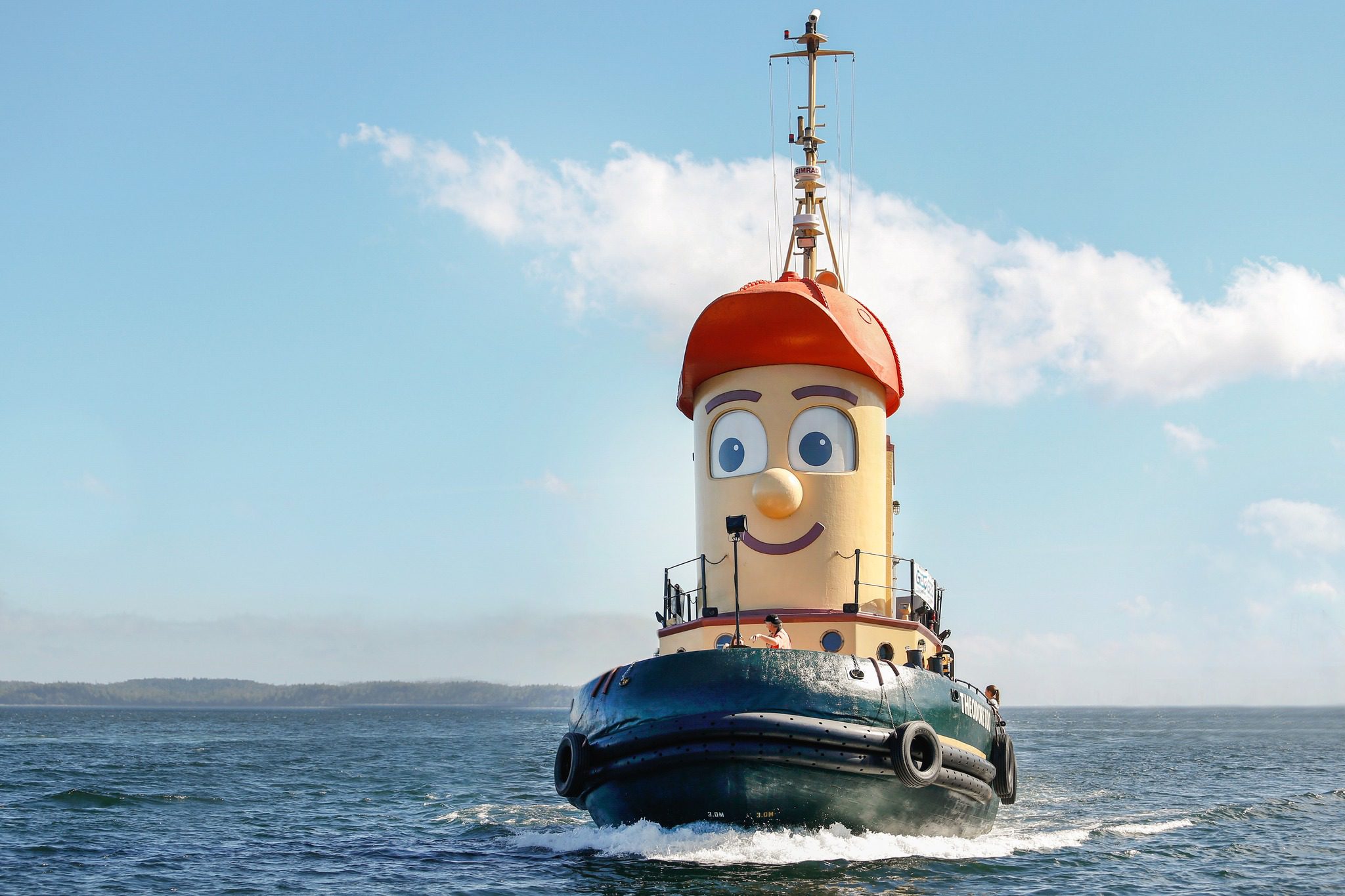
By Michael Carr – We were searching the bottom of Long Island Sound between Old Saybrook CT and Plum Island Long Island, for a 36 ft. powerboat. The boat sank after colliding with a towed barge, filled with concrete.
Our search area was approximately 7 miles long, east to west, and 6 miles wide, north to south. It’s a large area to look for a 36 ft. fiberglass boat. No one involved in the incident knew exactly where the boat sank, but of the six people on board, two had drowned, three remained missing, and one survived.
Searching for the missing boat involved towing a side-scan sonar along parallel track lines spaced 175 yds. apart. We towed the side-scan sonar along headings of 070 T toward the east, and then reversed and sailed 250 T to the west. When a possible contact was spotted on the side scan readout we dropped a 50 lb. iron weight with attached buoy over the side to mark the location.
Where the clump landed on the bottom was only an approximate location for the detected sonar blip, we had to calculate where the clump landed in relation to where the side scan sonar fish was located when the image appeared. This was not always easy, as GPS did not exist at the time.
After the marker was dropped, we donned our SCUBA gear, rolled off the side of the Coast Guard tug, and swam down the marker line. This was not an easy operation, as the currents in eastern Long Island sound run at several knots during maximum flood and ebb. Visibility was never good, maybe 20 feet at the surface, and rapidly diminishing with depth. We would pull ourselves down the descent line, into darkness, wondering what object might suddenly appear.
Carr: Technology Will Not Save You
There are hundreds of sunken barges, wrecks and debris on the bottom of Long Island Sound. Most are not marked or identified. And the depth of Long Island Sound is over 100 feet in most areas. Our search square depths ranged from 115 to 172 feet, and our military diving regulations restricted SCUBA operations to a maximum depth of 130 ft., so we had to watch our descent. We hoped to spot the boat sitting on the bottom before we reached the 130 ft. mark.
But most dives resulted in no sightings. We exhausted ourselves pulling down the descent line, experiencing limited visibility, darkness, and fighting against muscle straining currents. We often reached a depth of 130 ft. and could see nothing in the dark cold waters. We would shine our lights in all directions, pause for a few minutes, and then head back toward the surface. At a depth of 130 ft. bottom time is restricted to a maximum of 10 minutes because of nitrogen absorption.
Back on the surface, exhausted and cold, and not having found the boat, we would continue searching.
For two weeks we steamed back and forth in our search box, towing the side scan sonar, looking for contacts, dropping sinkers and diving. During the long hours of navigating and studying the side scan display, we would discuss the events, which led up to the accident.
A simple pleasure voyage had turned into a tragedy. The twin-engine powerboat, with six people onboard, departed Westbrook CT for a cruise to Montauk Long Island. They arrived in Montauk and enjoyed a day ashore. Then late in the afternoon the operator fueled up their boat for a return to Westbrook CT. This is when the first problem occurred. Diesel fuel was pumped into the gasoline-powered boat’s fuel tanks. This error was discovered, and the tanks were pumped out and refilled with gasoline, but departure time was substantially delayed and night was approaching.
Carr: Skipper Wants to See You In His Cabin, Now.
When they finally departed Montauk navigation was done using radar and loran. With night came fog and haze, and then the powerboat began to lose electrical power, maybe related to issues with engine operation and fuel contamination.
One of the engines quit running and electrical power was so low the radar and electronics stopped working. The boat’s operator did not know where they were, he was now lost. He called the Coast Guard, and found a red flashing buoy, which he began circling, uncertain of which buoy he had found.
By now it was late into the night, and the people on the boat were becoming nervous and highly concerned. Visibility was reduced in fog, and everyone on the boat donned lifejackets. There was no power on the boat now, the only light was from a battery powered reading lamp.
They spotted a passing sailboat and asked for assistance but there was nothing the sailboat could do other than call the Coast Guard, which they did. The sailboat departed into the fog.
Soon a large boat appeared, but unknown to the powerboat’s operator, it was a 100 ft. tug towing a 290 ft. barge loaded with 6,000 tons of dry cement, and the barge was at the end of a 1000 ft. hawser. Seas were 2-3 feet with winds SW at 15-20 knots. We could envision the situation. Still needing assistance the powerboat, operating on only one engine and with reduced power, headed towards the tug, but not understanding there was a barge astern, hidden by the reduced visibility.
What happened next will never be fully known, but it appears the powerboat operator talked briefly with the tug’s skipper and then, in an attempt to move away from the tug crossed over the partially submerged tow cable, and was run over by the concrete barge. None of the tug’s crew realized this happened until a day later when they arrived in Newport RI.
At 0630 the following morning the powerboat operator, the only survivor of the collision and sinking, washed up on Orient Point NY, exhausted and hypothermic. Two others bodies were recovered days later, and three were never found.
We continued searching while contemplating the accident. Scan the bottom, look for indications of anything resembling a boat, drop a sinker, don dive gear, and make a dive hoping to find the boat. We searched and we brainstormed on how we could improve our technique. But after two weeks of steaming back and forth in our search area, we had not found the 36 ft. powerboat. We had to do what the Coast Guard is always reluctant to do; we “suspended our search”.
I often think of this search, visualizing the events that night onboard the powerboat and tug. Being lost in the fog, engines not working, no lights or power. This can be terrifying. What should be a 3-hour pleasure cruise devolves into a collision, sinking and loss of life.
I was diving recently off the coast of Florida, and found myself at 130 ft. in the open ocean, coming up from a wreck. I stopped briefly, floating with only the ocean all around me, I could not see the bottom or the surface, just endless ocean. I thought back to this search in Long Island Sound, and then headed to the surface, welcoming the increase in light, warmth, and relief when I broke the surface.

 Join The Club
Join The Club












